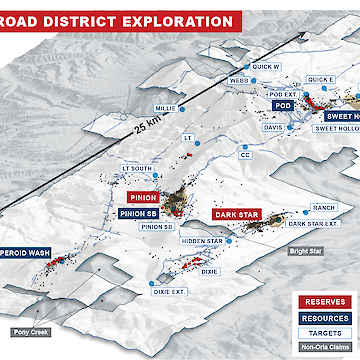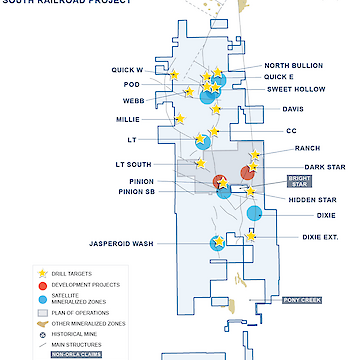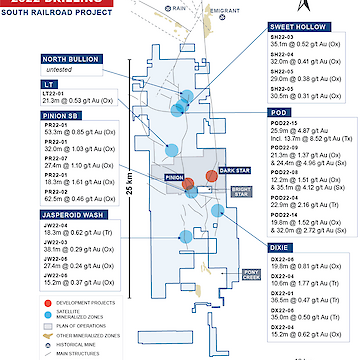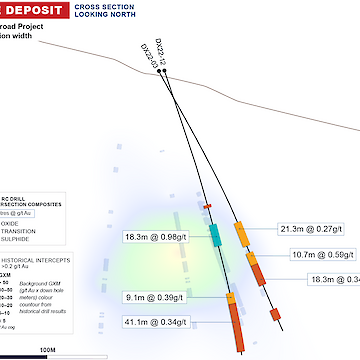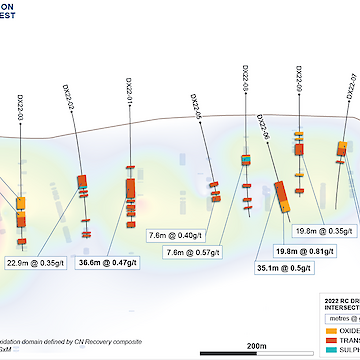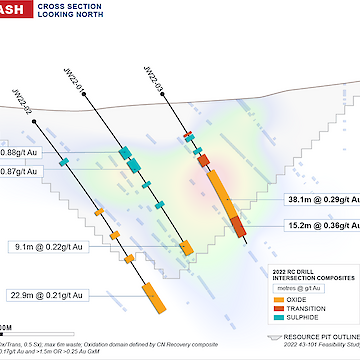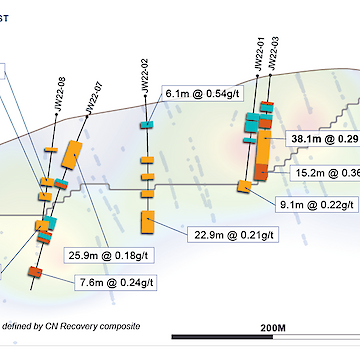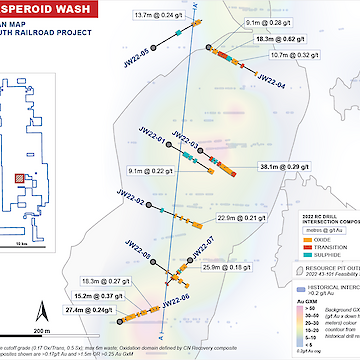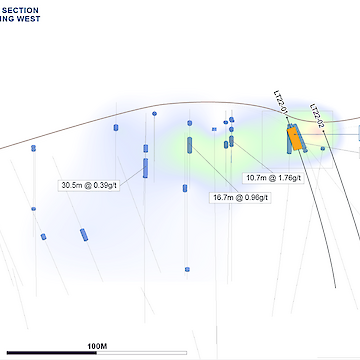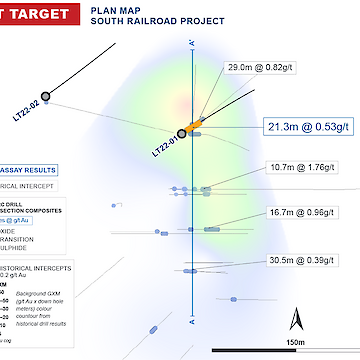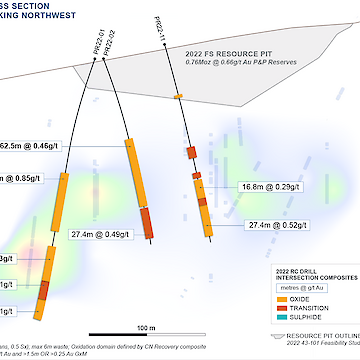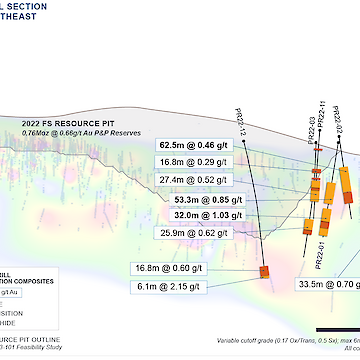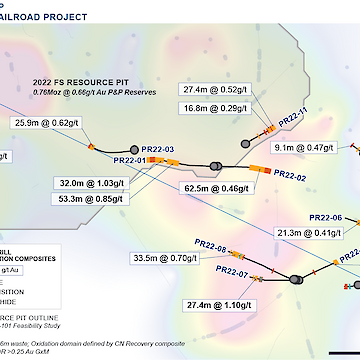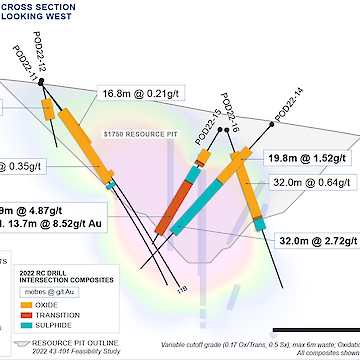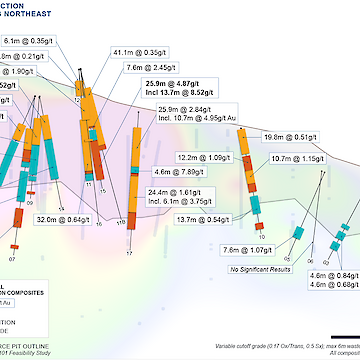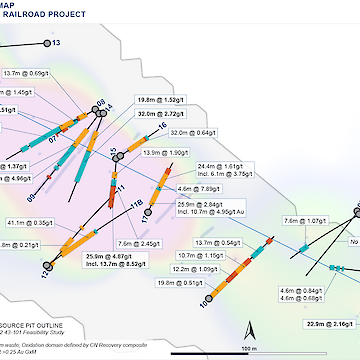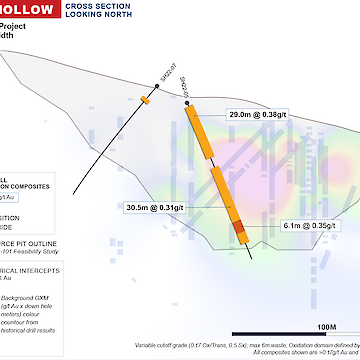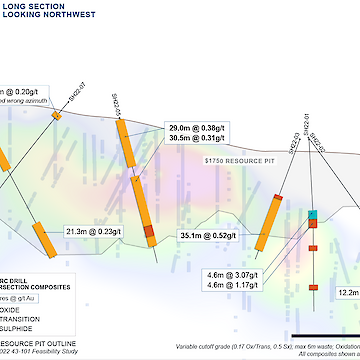Assets
Geology
General Geology and Mineralization at the South Railroad Property
The South Railroad Project is located in the Railroad mining district of the northern Piñon Range on the southern end of the Carlin trend, Nevada. The Carlin trend is a 60 km-long northwest-southeast cluster of >40 Carlin-type gold deposits containing a huge gold endowment of >100 million ounces. South Railroad displays a similar age and tectonic-stratigraphic setting as other Carlin-type deposits in Nevada.
Carlin-type gold deposits are disseminated epigenetic deposits hosted in silty carbonaceous and pyritic limestones with both structural and stratigraphic controls. Ore zones develop along favorable stratigraphic horizons or in breccias within structural culminations adjacent to deep, high angle feeder structures. Primary gold is elemental lattice-bound Au+ with lesser nanoparticles of native gold (Au0) in ore-stage arsenian pyrite. Ore-stage pyrite is trace metal rich with Au-As-Hg-Sb ±Cu-Tl-Te that precipitated by sulfidation of host-rock iron (i.e., iron-rich carbonates). The age of Carlin-type Au mineralization in Nevada is Eocene (~35-40 Ma).
South Railroad represents an Eocene magmatic center (39-37 Ma) with coeval intrusion-related base metal ore and Carlin-type gold ore. Intrusive rocks include the Bullion granodiorite stock, on which the historical Railroad district is centered, and numerous dacitic to rhyolitic dikes and sills. These rocks intruded a structurally complex array of Paleozoic siliciclastic and carbonate tectono-stratigraphic rock packages that host the ore. Paleozoic rocks are juxtaposed by high-angle faults and feeder structures that were reactivated during early extension associated with Eocene slab rollback magmatism. These structures host dikes and provided the pathways for Carlin-type ore fluids. Late Eocene (~37 Ma) volcanism erupted the Indian Wells rhyolitic ash flow tuff atop Late Eocene basin-fill sediments of the Elko Formation. These rocks crop out in the basin east of the Piñon Range and overlie the Paleozoic rocks with an erosional disconformity. Basaltic-andesite lavas erupted atop the Indian Wells tuff. Major Basin and Range style extensional tectonics commenced in Early Miocene time (~18 Ma), resulting in the classic block faulting style of post-Carlin type gold Basin-Range deformation.
The South Railroad property includes Carlin-type gold mineralization in at least four gold deposits: (a) Pinion, (b) Dark Star, (c) North Bullion, and (d) Jasperoid Wash. These deposits are similar in setting and style to the Rain-Emigrant Carlin-type deposits (~4 Moz Au) located 8 km north of the North Bullion deposit. Other gold prospects include Dixie, Pod-Sweet Hollow, LT, and Bald Mountain. Gold mineralization occurs mainly as disseminated Carlin-type ore-stage pyrite in stratiform breccia and stratigraphic horizons adjacent high-angle faults in Devonian, Mississippian, and Pennsylvanian-Permian clastic and carbonate rocks.
Maps and Sections

